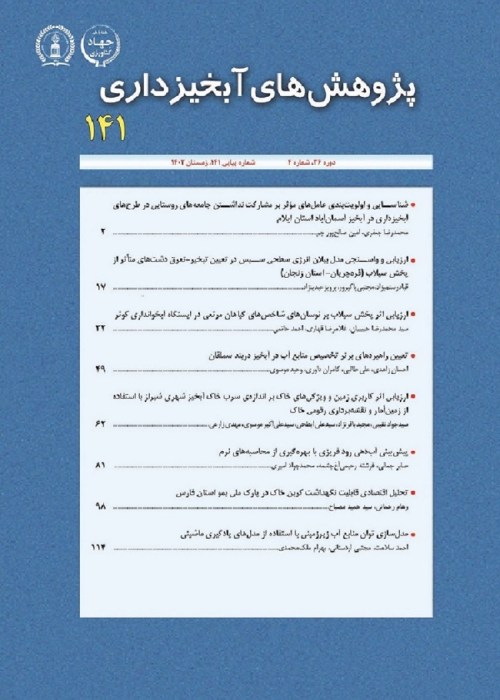The efficacy of an ultrasonic dispersion procedure to isolate soil primary particle-size fractions in pastures with different management
Author(s):
Abstract:
Pasture management may increase or decrease the cementing agents incorporated into soil primary particles through changes in the amount and composition of cover vegetation، the quality of organic C inputs to soil، soil organic matter (SOM) decomposition rate. To investigate the influence of ecosystem management and land use changes on organo-mineral complexes and SOM fractions، several physical fractionation techniques have frequently been performed، because these methods are considered to be less destructive to SOM than the traditional chemical fractionation methods. However، the complete dispersion of soil aggregates and particles is a central prerequisite and assumption in physical fractionation methods for obtaining reliable results. Thus، the objective of our study was to assess the efficacy of an ultrasonic dispersion procedure to separate soil primary particle-size fractions in protected pasture ecosystems with different grazing regimes in Central Zagros. Soil samples were collected from 0-15 cm depth of freely grazed and long-term ungrazed regimes in three native pasture sites including SabzKouh، Boroujen and Sheida areas. Sub-samples were analyzed for particle size distribution (texture) by both physical (i. e.، ultrasonic instrument) and chemical (i. e.، Calgon) methods. The Calgon method using hydrometer was considered a standard analysis for soil texture. Results showed that the ultrasonic dispersion energy necessary for complete dispersion varied from 386 to 1545 J ml-1، depending on pasture management and C contents in the bulk soil and in the fractions. The complete dispersion of primary particles for free grazing and ungrazing regimes was achieved at ultrasonic energy of 902 and 1545 J ml-1، respectively، in SabzKouh pastures. The necessary energy for complete dispersion of primary particles in Boroujen pastures was 386 for grazed pastures and 644 for ungrazed pastures، whereas in Sheida area the complete dispersion of primary particles occurred at 644 and 1159 J ml-1 ultrasonic energy، respectively، for free grazing and ungrazing regimes. Briefly، results of the current study demonstrate that (1) the calibration of energy output from ultrasonic instrument for given soil type with results obtained from a standard method (e. g.، Calgon) is indispensable and the existence of a strong correlation between the two methods is imperative، and (2) ultrasonic dispersion procedure resulted in a complete dispersion of soil aggregates and particles necessary for SOM studies.
Keywords:
Language:
Persian
Published:
Whatershed Management Research, Volume:25 Issue: 95, 2012
Page:
72
magiran.com/p1067859
دانلود و مطالعه متن این مقاله با یکی از روشهای زیر امکان پذیر است:
اشتراک شخصی
با عضویت و پرداخت آنلاین حق اشتراک یکساله به مبلغ 1,390,000ريال میتوانید 70 عنوان مطلب دانلود کنید!
اشتراک سازمانی
به کتابخانه دانشگاه یا محل کار خود پیشنهاد کنید تا اشتراک سازمانی این پایگاه را برای دسترسی نامحدود همه کاربران به متن مطالب تهیه نمایند!
توجه!
- حق عضویت دریافتی صرف حمایت از نشریات عضو و نگهداری، تکمیل و توسعه مگیران میشود.
- پرداخت حق اشتراک و دانلود مقالات اجازه بازنشر آن در سایر رسانههای چاپی و دیجیتال را به کاربر نمیدهد.
In order to view content subscription is required
Personal subscription
Subscribe magiran.com for 70 € euros via PayPal and download 70 articles during a year.
Organization subscription
Please contact us to subscribe your university or library for unlimited access!


